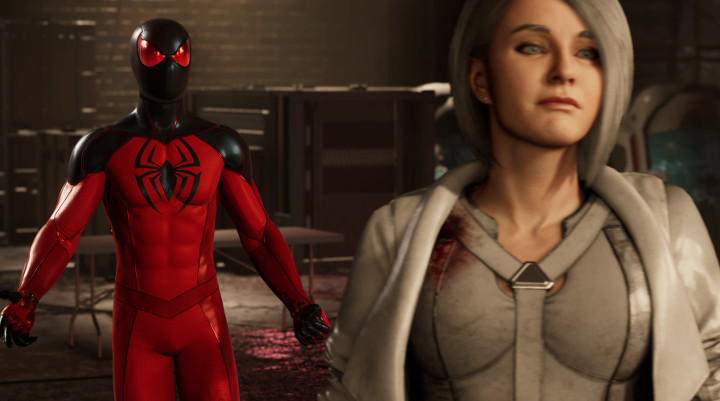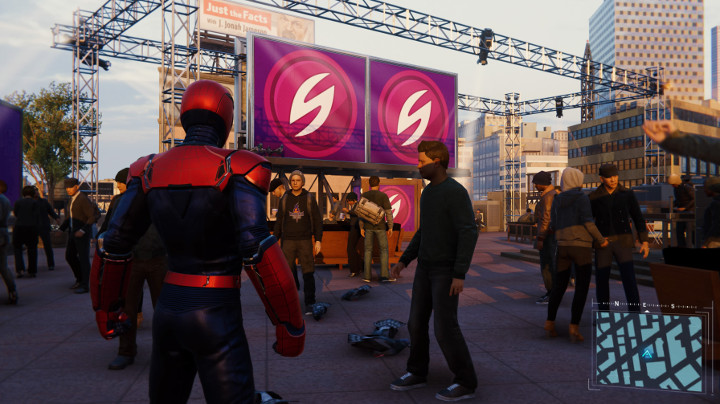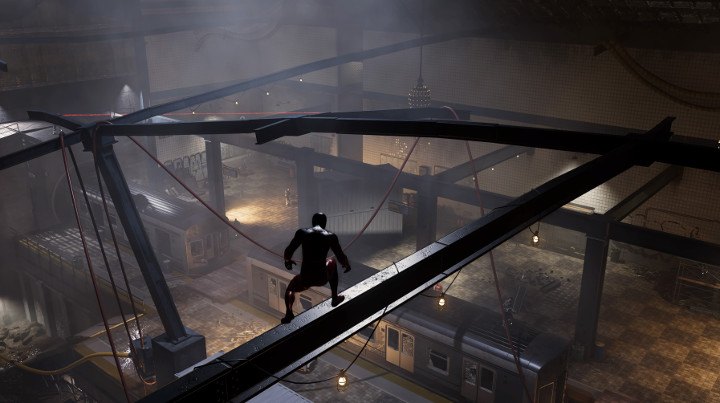
With The City That Never Sleeps, Marvel’s Spider-Man added downloadable episodic content to expand the story of its massive open world. Both the first chapter, The Heist, and the second chapter, Turf Wars, ended with cliffhangers. This three-act structure set up its third chapter as the ultimate conclusion, not only to the downloadable story content, but to the game as a whole.
So the final chapter in Marvel’s Spider-Man‘s The City That Never Sleeps DLC, Silver Lining, has quite a lot of ground to cover.
Thankfully, Silver Lining hits full speed right out of the gate, and it never really slows down (in its main story content, that is — there’s still free-roaming between missions that allows you to move at your own pace). Within the first ten or fifteen minutes of this DLC, you’re already thrown into a surprise boss fight against Sable on a rooftop. This is a CQC battle that wouldn’t feel entirely out of place in a Metal Gear Solid game (I mean that pacing-wise rather than in execution). I really like how fast all of this moves. It feels like a departure from previous story chapters in some ways, though it preserves all of their momentum and builds some of its own.
The main storyline in Silver Lining goes for more of a straight-up action narrative rather than trying to carry the sort of emotional weight that the main story (and both prior DLC packs) did. While Sable, like Black Cat, is portrayed as something of an antihero, she doesn’t really have the connection to Peter’s history that Felicia does. Sable does have a character arc here that makes her feel a bit more human than she did in the main game, though, which is nice.

A common complaint about Turf Wars was that it was too difficult (and it’s a complaint that I made myself). Insomniac Games seems to have heard this loud and clear, as Silver Lining dials back the difficulty a bit. This actually feels kind of strange, though, because story-wise, there’s a sense of rapid escalation in the technology possessed by Hammerhead’s organization. So the technology feels even more advanced here (with henchmen fully decked-out in mechanized combat suits), but the fights are actually easier than they were in Turf Wars. There’s a dissonance here between the narrative the game is feeding us and the feedback the gameplay is giving us (yes, this is called ludonarrative dissonance, if you want to be pedantic about it).
The simple truth is that Insomniac ended up in a tough place here. If Silver Lining upped the difficulty beyond that of Turf Wars, it would feel tedious and unfair. But if it didn’t, then the enemy battle tech would feel like it took a step backward. Making this content pack easier was the right choice, I think, but it also acknowledges and even underscores a serious flaw with Turf Wars: Turf Wars was just too darn difficult for its own good.

The side activities here are halfway decent for the most part. Now, the five-street-crimes-per-district (though not every district in the DLC packs will have crimes) formula is well-worn and time-tested. At this point, it feels a bit like comfort food, and it allows you to mindlessly swing around Manhattan for a while and still have things to do.
Sort of like how The Heist had its lost art scavenger hunts, Silver Lining has crime scene recordings — you’ll be seeking out recordings of a Hammerhead henchman’s therapy sessions. At first, this feels tedious, especially considering you’re at the tail end of an enormous journey. But once you get a few tapes deep, you start unravelling a story thread that actually does go somewhere. I was willing to write these off after the first couple, but by the end I was compelled to keep following what I assume is a dangling thread that will be picked up by Marvel’s Spider-Man: Miles Morales.

You also get to see the conclusion of the Screwball arc here. Finally. (Why this game’s DLC wasted so much time on such a horrible villain, I will never know.) The Screwball challenges are a bit easier here than they were in Turf Wars, but they culminate in a chase sequence that’s unforgiving and oftentimes incomprehensible. This is the most difficult (and I would argue worst) part of Silver Lining by a long shot.
Last (but not least) are the Olympus hideouts. Hammerhead’s goons have packed up a bunch of Sable’s stuff and moved it underground — literally. You have to drop through manholes to discover secret hideouts that exist in the sewers and abandoned subway tunnels. These dark, dilapidated, grimy environments are kind of fun to explore (Spider-Man refers to this as “urban spelunking” at one point). I actually really like the dichotomy between the bright Manhattan above ground and the damp and seedy anthill of Maggia lairs that lies beneath it.

Ultimately, Silver Lining is an appropriate end to the first part of Insomniac’s Spiderverse. It moves quickly and it focuses on action set-pieces rather than character narratives (though there are a few key scenes that are absolutely great). If you’ve played enough of Marvel’s Spider-Man to have gotten this far, I think you’ll be satisfied with how it ends, though I doubt you’ll be blown away.
It also leaves us with a fantastic launching point for Marvel’s Spider-Man: Miles Morales, which is just around the corner.